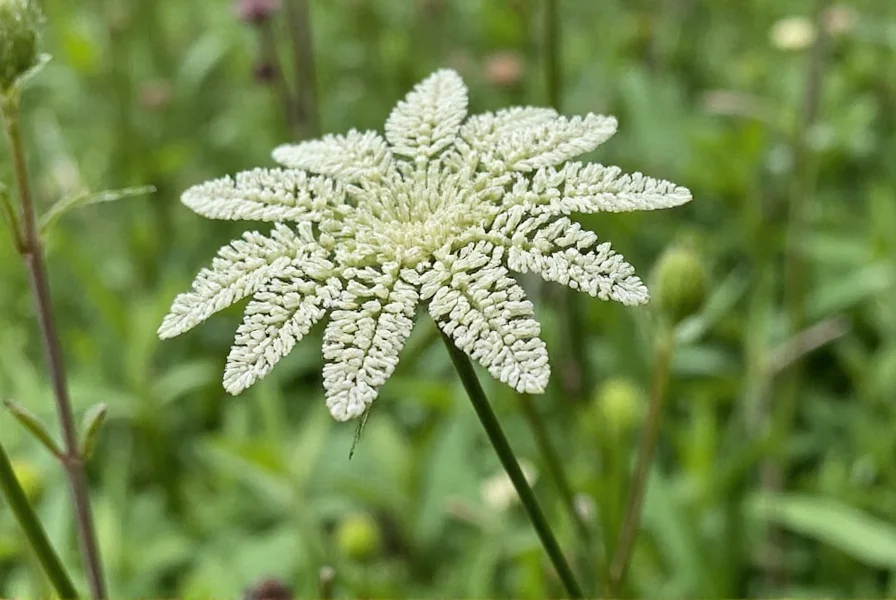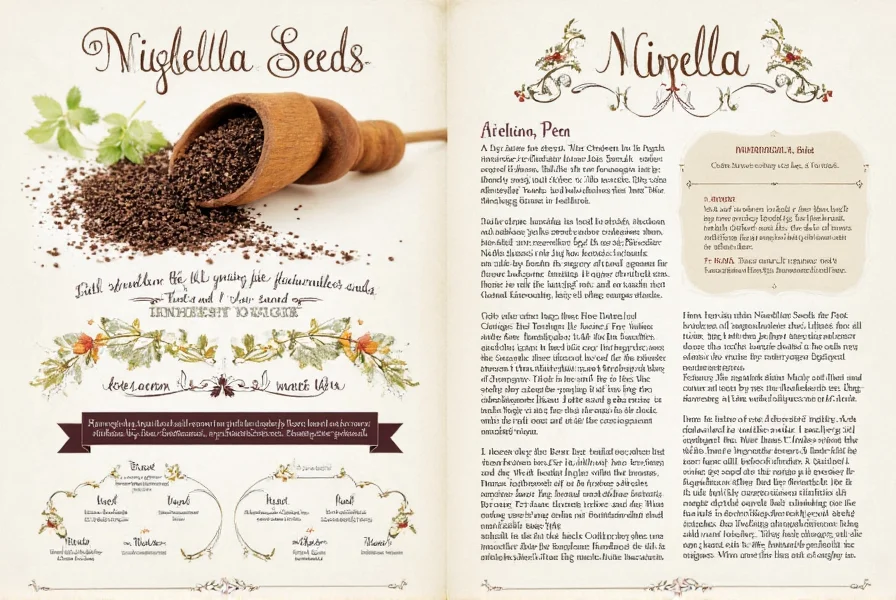Table of Contents
Introduction to Caraway Seeds
Caraway seeds (Carum carvi) are a versatile spice with a rich history in European and Middle Eastern cuisines. Known for their distinctive anise-like flavor and subtle sweetness, they're commonly used in breads, cheeses, and savory dishes. Despite occasional confusion with cumin or black seed (Nigella sativa), caraway is a unique spice with distinct culinary and historical significance.

The Basics of Caraway
Caraway seeds come from the Carum carvi plant, native to Europe and western Asia. Unlike black seed (Nigella sativa), which has a pungent, bitter taste, caraway offers a milder, sweet-anise flavor with earthy undertones. The seeds are crescent-shaped, ridged, and range from light brown to dark brown in color.
Caraway is often mistaken for cumin due to similar appearance, but the flavors differ significantly. Cumin has a stronger, smokier profile, while caraway is sweeter and more aromatic. This distinction makes caraway ideal for specific dishes where its unique flavor shines.
Uses and Applications
Caraway seeds are incredibly versatile across multiple cuisines:
- Baking: Essential in rye bread, soda bread, and Scandinavian pastries like Swedish cardamom buns.
- Savory Dishes: Used in sauerkraut, goulash, and German potato dishes for depth of flavor.
- Dairy Products: Pairs perfectly with cheese, especially in traditional German and Swiss cheeses like Gouda and Emmental.
- Infusions: Steeped in hot water for digestive teas or added to cocktails for aromatic complexity.
Caraway also has traditional medicinal uses for digestive health, but consult a healthcare professional before using it for therapeutic purposes.
Cooking Tips with Caraway
Maximize caraway's flavor with these practical techniques:
- Toast Before Use: Dry-toast seeds in a pan for 2-3 minutes to release their aromatic oils and enhance sweetness.
- Grind for Intensity: Use a spice grinder for ground caraway in marinades or spice blends, but store properly to preserve freshness.
- Pair with Complementary Flavors: Combine with juniper berries, coriander, or fennel for complex spice profiles.
- Use Sparingly: Start with 1/2 teaspoon per dish and adjust—caraway's flavor is potent even in small quantities.
Caraway shines in slow-cooked dishes where its flavor develops over time. Try it in braised meats or root vegetable stews for a comforting, aromatic touch.

Buying Guide for Caraway Seeds
When selecting caraway seeds, consider these key factors:
Quality and Freshness
Look for seeds with a strong, pleasant aroma and uniform color. Avoid seeds with musty odors or visible moisture, which indicate staleness.
Form
Caraway is available as whole seeds or ground powder. Whole seeds retain flavor longer (up to 2 years) and are ideal for toasting. Ground caraway is convenient but loses potency after 6 months.
Brand and Origin
Reputable brands like Spice House, Penzeys, and McCormick offer high-quality, organic caraway. Look for products sourced from Europe, where caraway cultivation is most traditional.
Price Range
Whole caraway seeds typically cost $4-$12 per ounce, while ground versions range from $5-$15. Organic or specialty varieties may be priced higher but offer superior flavor.
Use Cases and Target Audience
Caraway is ideal for bakers, home cooks, and those exploring European cuisine. It's perfect for rye bread enthusiasts, cheese lovers, and anyone seeking to add depth to savory dishes.
Suitable Occasions
Caraway enhances holiday baking (e.g., Christmas stollen), traditional European dishes, and everyday cooking. Its versatility makes it suitable for both casual meals and special occasions.
| Feature | Whole Seeds | Ground Powder |
|---|---|---|
| Flavor Retention | High | Medium |
| Convenience | Low | High |
| Shelf Life | Up to 2 years | 6-12 months |
Frequently Asked Questions
What is caraway and how is it different from cumin?
Caraway (Carum carvi) is a distinct spice from cumin (Cuminum cyminum). While both are small, curved seeds, caraway has a sweeter, anise-like flavor with hints of citrus, whereas cumin is earthier, smokier, and more pungent. Caraway is commonly used in European breads and cheeses, while cumin is a staple in Middle Eastern, Indian, and Mexican cuisines.
What does caraway taste like?
Caraway has a complex flavor profile: sweet, slightly anise-like, with earthy and peppery undertones. When toasted, it develops a warm, nutty aroma that enhances baked goods and savory dishes. Unlike black seed (Nigella sativa), caraway lacks bitterness and offers a more delicate, rounded taste.
How should I store caraway to maintain freshness?
Store whole caraway seeds in an airtight container away from light, heat, and moisture. They retain peak flavor for up to 2 years. Ground caraway should be used within 6 months for optimal taste. For extended shelf life, refrigerate or freeze in sealed containers to preserve volatile oils.
Can I substitute caraway for cumin in recipes?
Substitution is possible but will alter the dish's flavor profile. Caraway is sweeter and less earthy than cumin. For rye bread or cheese dishes, caraway is irreplaceable. For chili or curries, cumin is preferable. If substituting, use 75% of the cumin amount and adjust to taste.
Are there health benefits associated with caraway?
Caraway has traditional uses for digestive relief, including reducing bloating and gas. It contains antioxidants and may support respiratory health. However, scientific research is limited compared to black seed (Nigella sativa). Always consult a healthcare professional before using caraway for medicinal purposes.
What are the best dishes to use caraway in?
Caraway shines in rye bread, sauerkraut, German potato dishes, and Swiss cheese recipes. It complements root vegetables (carrots, parsnips) when roasted and adds depth to braised meats like pot roast. For desserts, try it in gingerbread or apple pies for a unique twist. Avoid using it in spicy dishes where its subtle flavor would be overwhelmed.
Conclusion
Caraway seeds are a misunderstood spice with incredible versatility. Their unique anise-like flavor elevates everything from rustic breads to elegant cheeses. By toasting, grinding, and pairing correctly, you can unlock caraway's full potential in your kitchen. Whether you're a home cook or professional chef, this spice deserves a permanent spot in your pantry.
Next time you're preparing a dish, try caraway—it might just become your new favorite ingredient.










 浙公网安备
33010002000092号
浙公网安备
33010002000092号 浙B2-20120091-4
浙B2-20120091-4